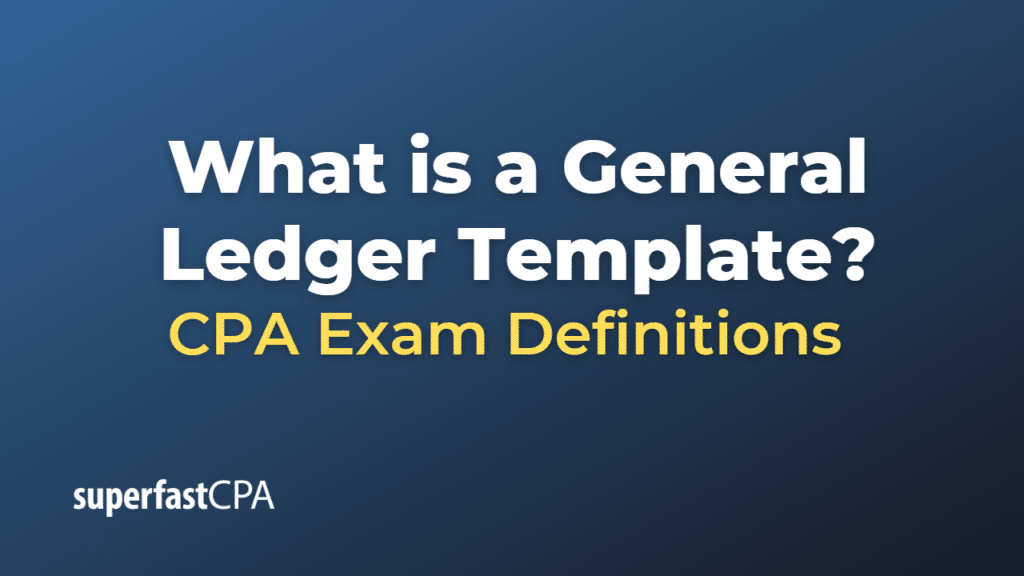General Ledger Template
A General Ledger Template is a ready-to-use document or software file designed to manage and organize financial transactions. It’s often used by businesses to maintain their books without having to create a ledger from scratch.
A general ledger template usually comes in the form of a spreadsheet in software like Microsoft Excel, Google Sheets, or a feature within accounting software. The template typically contains separate sections for different types of financial information, and it allows users to input data for income, expenses, assets, and liabilities.
Here’s a basic example of what a general ledger template might include:
- Date: This column is for recording the date of the transaction.
- Description: This column includes a brief note about the nature of the transaction.
- Journal Entry Number: This is a unique identifier for each transaction.
- Debit: This column records the amount of the transaction that was a debit (increased an asset or expense account, or decreased a liability or equity account).
- Credit: This column records the amount of the transaction that was a credit (increased a liability or equity account, or decreased an asset or expense account).
- Balance: This column keeps a running total or balance for each account after each transaction.
These columns could be duplicated for each account that a business uses (like Cash, Accounts Receivable, Accounts Payable, Sales Revenue, etc.), so that all the transactions for each account can be tracked separately.
Using a general ledger template can save time, reduce errors, and streamline the accounting process, especially for small businesses that might not have complex accounting software. However, as the business grows, it might be more efficient to use a dedicated accounting system, which can automate many of these tasks.
Example of a General Ledger Template
Here is a simplified example of a general ledger template that you might create using a spreadsheet program like Excel. For simplicity’s sake, we’ll consider a simplified business with just two accounts – Cash and Sales Revenue.
| Date | Description | Journal Entry Number | Debit: Cash | Credit: Cash | Balance: Cash | Debit: Sales Revenue | Credit: Sales Revenue | Balance: Sales Revenue |
|---|---|---|---|---|---|---|---|---|
| 2023-06-01 | Initial investment | 1 | 10,000 | 10,000 | 0 | |||
| 2023-06-03 | Sale of goods | 2 | 2,000 | 8,000 | 2,000 | 2,000 | ||
| 2023-06-07 | Sale of goods | 3 | 3,000 | 5,000 | 3,000 | 5,000 | ||
| 2023-06-15 | Owner withdrawal | 4 | 1,000 | 6,000 | 5,000 |
Here’s how to read the table:
- On June 1, 2023, an initial investment of $10,000 is made (this is a debit to the Cash account).
- On June 3, 2023, a sale of goods worth $2,000 is made (this is a credit to the Cash account and a credit to the Sales Revenue account).
- On June 7, 2023, another sale of goods worth $3,000 is made (again, this is a credit to the Cash account and a credit to the Sales Revenue account).
- On June 15, 2023, the owner of the business withdraws $1,000 (this is a debit to the Cash account).
The Balance column for each account shows the account’s balance after each transaction.
Remember, this is a simplified example. A real general ledger would have many more accounts and many more transactions. Also, remember the principle of double-entry bookkeeping: every transaction should have a corresponding debit and credit, keeping the overall ledger in balance.













